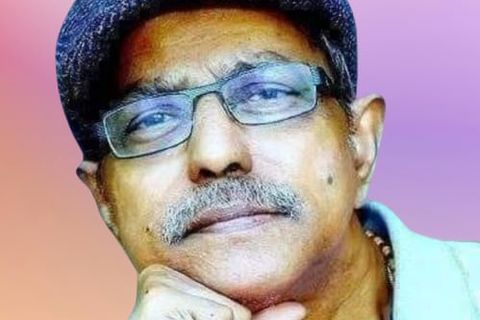RECKLESS REVELOUTION - STORY BY WILLIAMSJI MAVELI

RECKLESS REVOLUTION
Mesmerizing Green Hills
Last night, Meera was so lazy to get into my own sleep for the usual nightmare. Ambalamedu is a beautiful place near Thripunithura in Ernakulam, which means roof or a temple of meadows came into mind, scattering the many-colored glass pieces of my old childhood memories.
On reaching MG Road, Meera held Rajeev’s hand and they both came out of the metro station. They walked up to the bus stop and waited for the bus for Mattancherry, where Rajeev’s parents supposedly lived. Located within less than ten kilometers from the heart of Kochi, lies Mattancherry.
Viswanathan was going through an agonizing situation. He had no idea what was missing from his own life and what there was to seek further. Was it the real meaning of life that he was looking for? He was not really sure about it, but he was certainly struck by the pointless of life, slowly, this concern turned into an obsession.
Seemingly, he had come into being when he was born and would cease to be when he died. Where was he before he was born? Where would he go after he died? It was all a mystery for him.
When Viswanathan entered the hotel, he saw Ramya waiting for him in the lobby. This was their first meeting after clearly expressing their deep love for each other.
There was a joy written all over their faces. They said
“Hi”
as their eyes met. For a while, they kept looking into each other’s eyes. Then, hugging lightly, they held each other’s hands and moved to the room.
As soon as they were in the room, they instinctively fell into each other’s arms with their lips locked. The hug lasted and lasted.
In that moment, his mind flashed back like a lightning bolt to the time when he was two, perched on the shoulders of his father and looking around with a sense of wonder and pride.
It seemed that it had taken him his entire lifetime to arrive at this moment with Ramya. It was as if his whole life had been a preparation for him to be in her arms at this moment.
They found themselves thrusting their bodies into each other’s as if they wanted to disappear into each other. When one of the them tried to relax the hug, the other one tightened it.
Finally, when they separated to take a breath, they held hands and sat on the bed. After a while viswanathan looked outside the windows of the air conditioned room then briefed on the old state of marine drive before 30 years back.
“This Shanmugham Road lining the Kochi Lake was the first road to be asphalted in Kochi area. The Marine Drive was yet to come up and the Banerjee Road was not even an idea. A canal stretched between the Kerala High Court and Palarivattom.
There was never even a nominal flood in Kochi until the 1970s. Kochi never happened then. Until the 70s, Kochi and its suburbs were seen today as just a single inland village. Apart from the harbor and the old railway station, the tallest in Kerala at Kayaloram, the seven-storied “Sealord Hotel”, the rare double-storied buildings, the market, Broadway, market boats, bullock carts, and so on, 95% of today's Kochi city is a village of vast paddy fields, full of fruit trees, full of well-flowing streams, canals, swamps, wetlands, ponds and backwaters, and rivers.
The land where as much rain as falls gets into the soil and the rest flows without any hindrance into rivers, lakes, and fields. Today's MG Road.until the first half of the seventies.
The golden paddy field was growing in abundance right next to the MG road. It was a time when it rained non-stop for months. Still, there was no flood in Kochi that day.
How come today Kochi is submerged in water just by a single rain that lasts for hours? Especially when it's full of canals and repeatedly costs billions to build and maintain it? Aren't there some reasons for the recurring floods here since the eighties? Why is it not sought, not told, not exposed, when is it not for the flood?
Let me tell you a story from the seventies, the story of the early seventies. Kochi, where today's shipyard is located, was a very beautiful village back then. To the east of it, seventy feet road were paddy fields, streams, swamps, and wetlands where Pokkali rice grows abundantly.
The railroad tracks that we see today run through the middle of it, that too at a height. All the water that fell on that day flowed without any hindrance into the aforementioned paddy fields, creeks, marshes, wetlands, and then into the rivers. In the 1970s, Girinagar, then Gandhinagar, and Panambilly Nagar were filled one by one. And then around it would be oceans of buildings, above and below the ground, without any regulation or planning seen today. Then, where will all the water that falls fall and flow through which ways.
The answer to that question is the miseries of water logging that the reference area has experienced since the 80s till this time and is yet to experience. If there were any means left for the water to flow away, they are now all topped by buildings. Those with money and influence grabbed it all. There has been no shortage of that in Kochi till now. No hawk flies over money. If there was any soil left, it was covered with tar and tiles.
When the rich did this, the poor found a place to sleep and the water flow was on the way. Right in front of the shipyard, opposite the road, there was a very wide promontory extending south to the river, where boats used to go up and down, until the seventies.
The stream where all the rainwater had flowed away was full of fish playing. In the early 70s, dozens of houses came up in that stream itself. The encroachers first built houses over the water. Then the ditch was filled and houses were built. Then the water through it to flow.
This is exactly what happened in Kochi after the 70s. Then through which route will the water flow.
If there are crores of money that have been shared in various tributaries in Kochi in the name of avoiding water logging till now, may be a state can buy a ban.
So my friend let's sit upstairs and meditate on the cup of life!!!
The history of Kalvathy canal is tied to the story of Fort Kochi and the city. The first Portuguese visitors who wished to meet the rulers of Cochin in the year 1500 A.D. brought their ships to Kochi’s natural harbor near Mattancherry. From here they set out along the Kalvathy canal in their sailing boats to land at a natural tank situated about a kilometer from the shore. This tank, local people say, was the center of trade for several years after the Portuguese arrived. Over five centuries after the Portuguese landed in Kochi, all that remains of the tank is a field filled with rubble.
“Vasco da Gama’s expedition to Kerala shores was followed by another expedition led by Pedro Alvares Cabral. In Kozhikode, Cabral and his men had a fight with the Zamorin and they decided to come to Kochi.
They landed near the old harbor at Mattancherry on December 24, 1500,” says Austin Paul, president of the International Forum for Cultural Heritage and Tradition. From here, Cabral and his men are believed to have traveled up the canal in their boats to reach the tank situated near the current Government Hospital at Karuvelipady.
They later signed a friendship treaty with the then ruler of Cochin King Unni Goda Varma Tirumulpadu. In later years, the Portuguese would load spices on to their boats from the dock at the tank and carry them to their ships anchored off the shore. The Portuguese, in alliance with the Cochin rulers, later set up their Fort Emmanuel here. Though the fort was destroyed by Dutch traders later, Fort Kochi developed around the location of the old fort.
While the fortunes of the Portuguese in Kochi waxed and waned, the tank continued to be a key point for trade until recent years.
“The tank was the docking point for boats bringing in cargo from the harbour. Bricks, stone, metal and other goods were brought here from the main harbour for trade,” says P.S. Prakash, councillor from Karuvelipady.
Over the years, the tank was encroached upon, reducing its size greatly.
“It must have been around 2,400 sq.m in area at some point. The Portuguese sailing boats could be manoeuvred in this tank,” says former councillor V.J. Hycinth. The Government Hospital came up here later. Others too encroached on the tank to build roads and houses.
“The tank’s death began once water transport started losing importance and more space was necessary for roads. It soon became a waste dump and the corporation filled it up a couple of years ago.
There were proposals to build a dormitory for the hospital here,” says Mr. Hycinth.
Mr. Paul feels that the corporation should take steps to revive the Kalvathy canal and set up a memorial reminding people of the significance of the tank that was once present here. “The tank has now been filled up. But people should at least know how the tank here was crucial to the history of Kochi”.
Kochi has come a long way since the times when a fleet of dhows lined its backwater entrance with car... A nightlife scene from half a century ago would show the boats carrying loads of commodities and
Kochi, or Ernakulam in local parlance, owes its phenomenal growth to the development of the Venduruthi bridge.
Kochi the commercial capital of Kerala, came it is being in 1967 as a result of the merging of the nonbearing towns. Kochi, today. become the largest and most important city in Kerala. Kochi is known as the queen of the Arabian sea is also the second most important city on the western coast of India.
Kochi has many distinguishing attractions
of its own. It has a tourist paradise with a sparkling blue lagoon.
Kochi, today become the largest and
most important city in Kerala. Kochi known as the queen of the Arabian Sea is also the second most important city on
the western coast of India.
This waterway was the major mode of transport
for spices and other trade goods from Fort Kochi to
different places until 1970 and later was used by
fishermen to access the lake to bring in their catch for the day.
The Rameswaram canal and its allied canal
systems had been a hub of international trade in Kochi for centuries. However, the development of road transport and railway
traffic facilities pushed canal transport systems to a
humble backseat and urbanization inched its way further east.
There are some phenomenal views along the river which are occasionally obscured by what generally seems to be the Indian blight, litter. Some of the sights are literally from the movies and you will need to assure you have a good camera. If the local authorities can get properly on top of the littering then this could be prefect as it should be.
Chalakudy is a small town some 20 kms away from Cochin and the airport. It's a beautiful small place and the places to visit include the Kauthuka Park, this is a must, in food don't miss the fish and prawns. The Chalakudy River is the third largest in Kerala and is a beautiful sight.
Chalakudy River ,a river with a wide variety of fish There are many species of endangered fish. Great to see that flowing. Seeing the waters for a long time gives you a headache. Most fishermen in Kannakankaeavu catches fish from there and makes their livelihood.
Chalakudy River or Chalakudy Puzha is the fifth longest river in Kerala, India. The river flows through Palakkad district, Thrissur District and Ernakulam District of Kerala. The total drainage area of the river is 1704 km. out of this 1404 km lies in Kerala and the rest 300 km in Tamil Nadu
Though it is said to be a tributary of the River Periyar, it is treated as a separate one, its origin is from Anamalai hills and flows through three districts before joining the Arabian sea.
Athirapilly and Vazhachal are two major water falls in the river and the Peringalkuthu, Sholayar and Thumboormoozhy are the three dams built across the river and the major town through which the river flows is Chalakudy from which the river gained the name. The river with a length of 145 Kms is supposed to be the fifth longest river in Kerala.
The Chalakudy River originates in the Anamalai hills in the Western Ghats in the state of Tamil Nadu. In spite of originating there, the Chalakudy River is more famous in Kerala.
The lush waters of the Chalakudy go a long way in ensuring that the greenery of the state is maintained in all ways. Thanks to the clearly waters of the Chalakudy Kerala adds more greenery to the already lavish vegetation of the state.
Because of the high availability of the water resources in and around the region, the soil tends to become abundant and rich, thereby enhancing the growth of the thick greenery on the fields.
Presence of waterfalls thanks to the water currents that exist in the Chalakudy River is the other most important and mentionable factor of this river. The enchanting falls of Athirappally is seen of this river.
There are a lot of tourists who come to see this waterfalls and this is even nicknamed to be the Niagra falls of India. Such is the bewitching nature of the falls that is quite famous all over the county and even in other parts of the world.
The river also has the Sholyar Hydro Electric power stationed in it to help in generation of electricity that is supplied across the state.
This is possible, only because of the high level of water and the speed with which the water flows from river and also the natural water currents that are present in the river.
The speed at which they fall rotate the turbines and this is converted as electrical energy that can be used by the people across the state. The Thumboormoozhy dam on this river helps in preserving water. One of its tributaries also has the Parambikulam Dam built on it.
The same is the case with the forest areas that are found along the banks of the river. There are three islands of considerable size that are covered with the vegetation that thrives here.
Most of the trees found here belong to the botanical classes of evergreen or partially ever green groups thereby giving the area a green look all through the year.
There are quite a few plants here that are almost on the verge of extinction and these include flowering trees with flowers of all diverse colors.
The Chalakudy River is supposedly a tributary of the River Periyar, there are other smaller tributaries that form part of this river as well.
The long Chalakudy River branches out in the course of its flow and these branches have resulted in the formation of four primary tributaries – Karappara, Parambikulam, Kuriyarkutty and Pulikkal.
Of these, the Parambikulam River is considered to be the most important. This Parambikulam River even has a dam that has been considered to be the most important. This Parambikulam River even has a dam that has been constructed over it.
There was a very sudden release of water from the Mullaperivar Dam. This is due to Tamil Nadu Government was one of the reasons for the devastating flood in Kerala.
The Tamil Nadu government rejected the argument, saying that Kerala suffered the deluge due to the discharge of excess water from 80 reservoirs across Kerala, spurred by heavy rains from within the state.
It also argued that the flood surplus from the Iddukki Dam is mainly due to the flows generated from its own independent catchment due to unprecedented heavy rainfall, while the discharge from Mullaperiyar dam was significantly less.
Though it is difficult to attribute any single event to weather change to, its possible role in causing the heavy rainfall event over Kerala cannot be ruled out.
Cochin International Airport India's fourth busiest in terms of international traffic, and the busiest in the state suspended all operations until end of August, following runway flooding.
All schools throughout the state except Sainik School Kazhakootam have been closed, and tourists have been dissuaded or banned from some districts due to safety concerns.
Like 0 Pin it 0



